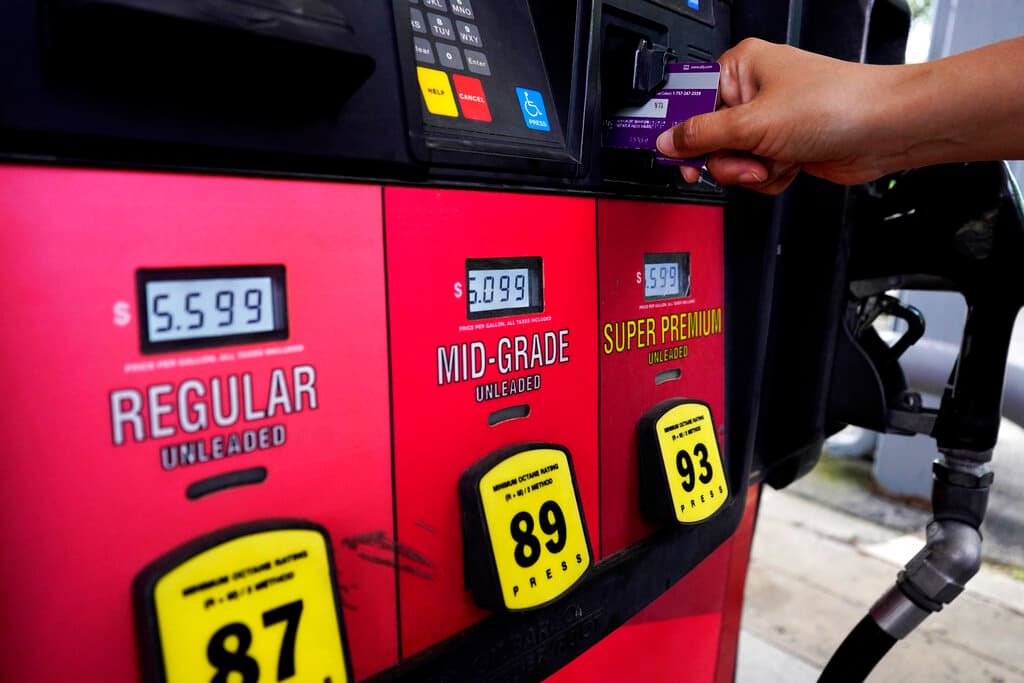California, Already the State With Most Expensive Gas, May Make Driving Even More Costly
It’s now looking to tighten its fuel standards further, which could be the beginning of harsher regulations across the country.

Proposals aimed at automobiles in California — which, at over $5 per gallon, already has the highest gasoline prices in the nation — threaten to make hitting the road even more expensive. With the Golden State setting benchmarks for other states, the results may end up costing drivers coast to coast.
This year, the California Air Resources Board mandated that 80 percent of all vehicles sold in the state by 2035 be electric and limited the remaining 20 percent to plug-in hybrids. The Clean Air Act offers states incentives to follow their lead, and many did.
States that fail to meet federal emission standards get a pass if they adopt the stricter limits written in Sacramento. Eleven states have already adopted some or all of the Golden State’s rules on emissions and mirrored its EV mandate.
Now, California is looking to tighten its fuel standards even further. Its Air Resources Board had a hearing on new regulations scheduled for last Monday but postponed it until November 8. That ensures that the hearing falls after Election Day, when voters might voice their displeasure at the ballot box.
Sacramento Democrats were right to be concerned about sticker shock. In a September report, the California Air Resources Board, CARB, projected that the proposals could add 47 cents to the cost of a gallon of gas through 2025, 52 cents in 2026, and march on up to $1.83 by 2041.
CARB repudiated the numbers in December, saying the initial report “did not capture all of the transportation fuels that will be available in response to these regulatory updates.” Regardless of the exact increase, drivers in California will be paying more for gasoline this summer. Starting July 1, the state will hike what’s already the highest tax in the nation by two cents a gallon.
While new taxes can only be imposed by the legislature, CARB has increased the cost of filling up by imposing regulations on gasoline producers. For example, California mandates unique fuel concoctions, requiring expensive retooling to keep in compliance.
Despite having more cars than any other state, California has lost two-thirds of its refineries in the last 40 years, the head of petroleum analysis for GasBuddy, Patrick De Haan, told CNBC in March. Fewer places producing the special blends, and being unable to import supply from other states, raises prices.
“We believe consumers need to understand the cost of these programs,” the vice president of Strategic Communications for the Western States Petroleum Association, Kevin Slagle, told KCRA on Tuesday. “If they have merit, great, but let’s make sure consumers understand what that’s going to mean for them at the pump.”
The goal of California’s regulatory frenzy is to force drivers away from gas-powered vehicles and push petroleum producers to deliver cleaner fuels. That goal can only be achieved by imposing pain on everyone from producers to drivers — and the more pain there is, the faster the state gets what it wants.
As this transition unfolds, gasoline sales will drop, and mean less tax collected at the pump. The Road Charge Program Manager at Caltrans, Lauren Prehoda, told NBC News on Tuesday that in 10 years, California could lose — and EV drivers keep — $4.4 billion.
Looking for a way to ensure drivers keep paying, Caltrans is testing the feasibility of charging them by how far they go. The six-month Road Charge Collection Pilot program will ding volunteers at a rate of three cents per mile — about $15 for a trip from San Diego to San Francisco.
“Most states are taking steps toward” a Vehicle Miles Traveled model according to analysis by the Tax Foundation. Of special interest to them is if California finds a way to institute mandatory GPS tracking of citizens without violating constitutional privacy rights enshrined in the 4th, 9th, and 14th Amendments.
California, America’s largest state, is a trendsetter for the regulation of vehicle emissions and fuels. Residents elsewhere are wise to keep an eye on what’s happening there. Once their local bureaucracy starts mandating that tanks be filled with the West Coast’s special — and costly — blend of regulations, it’ll be too late to hit the brakes.

